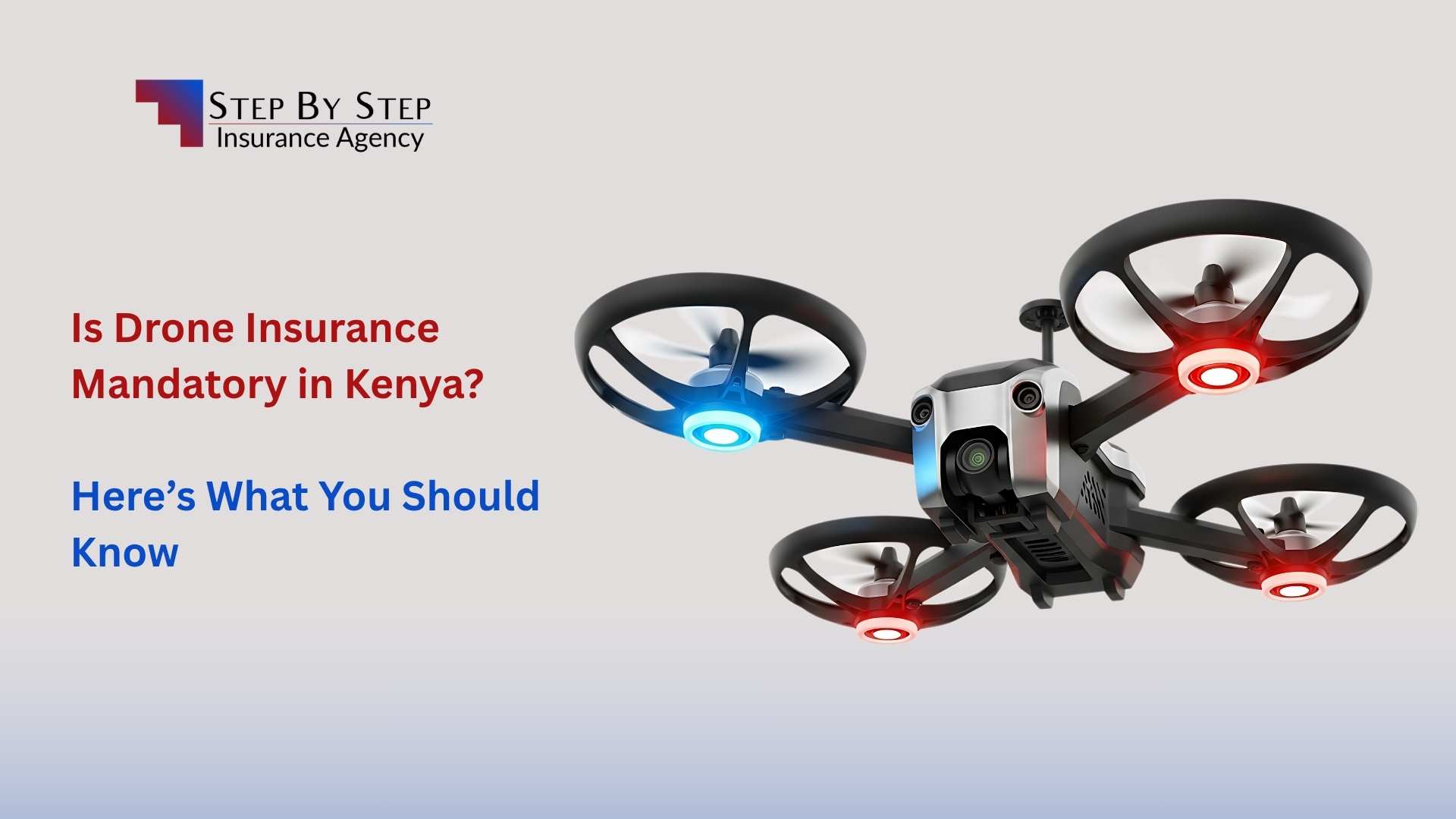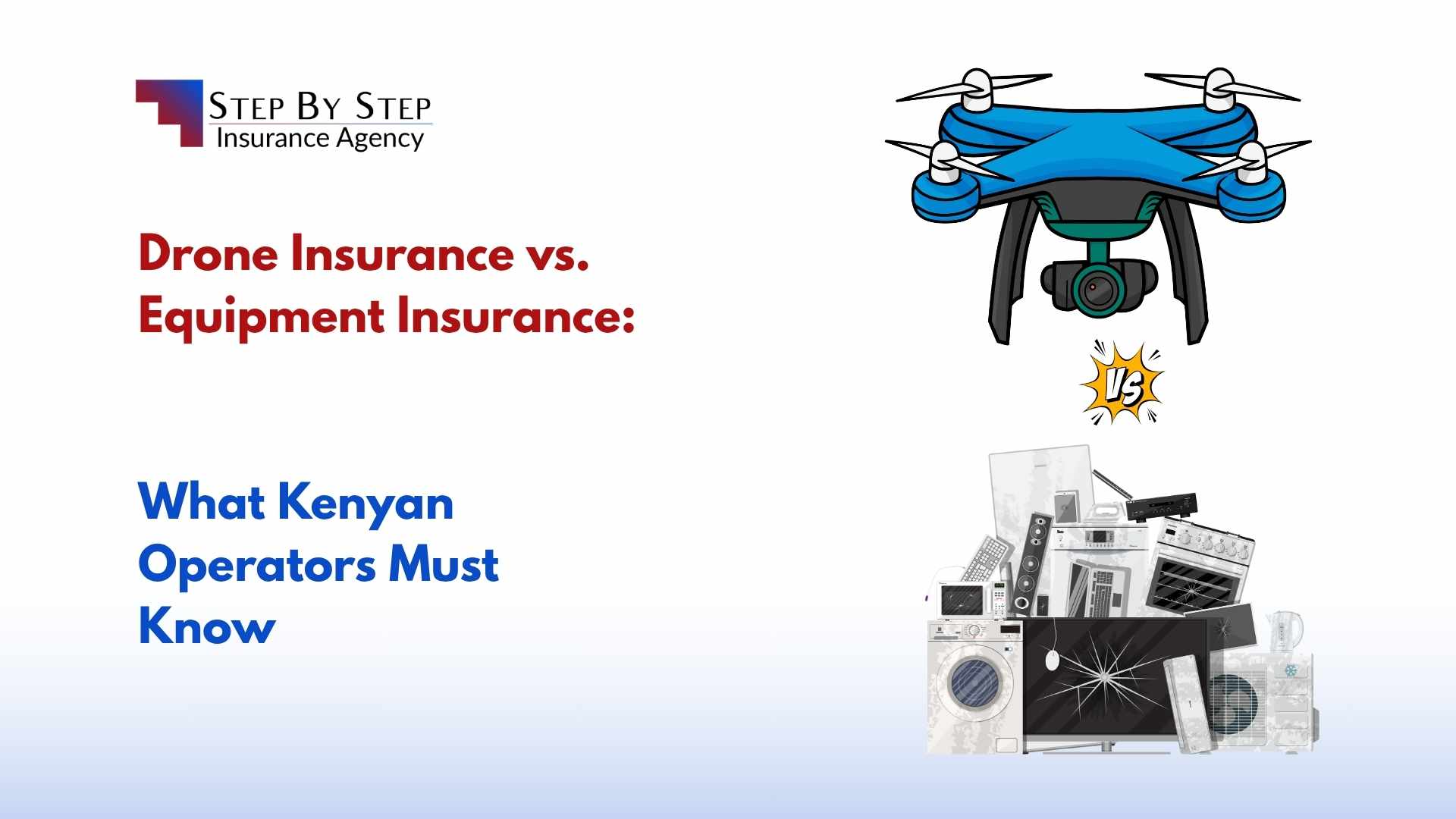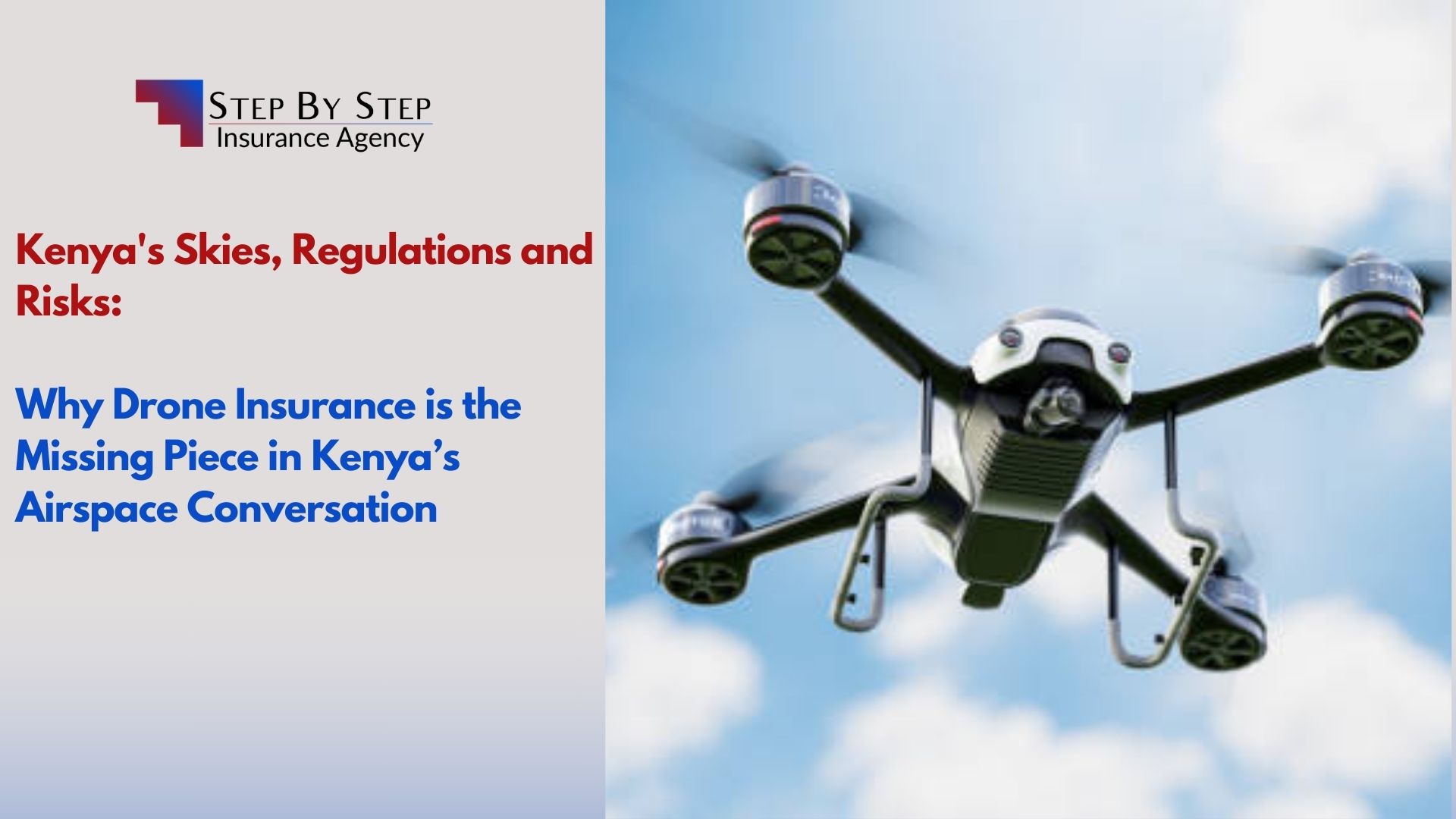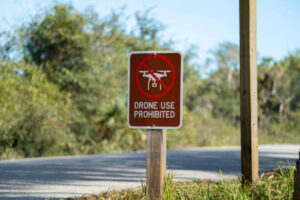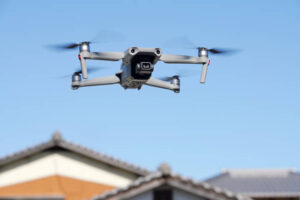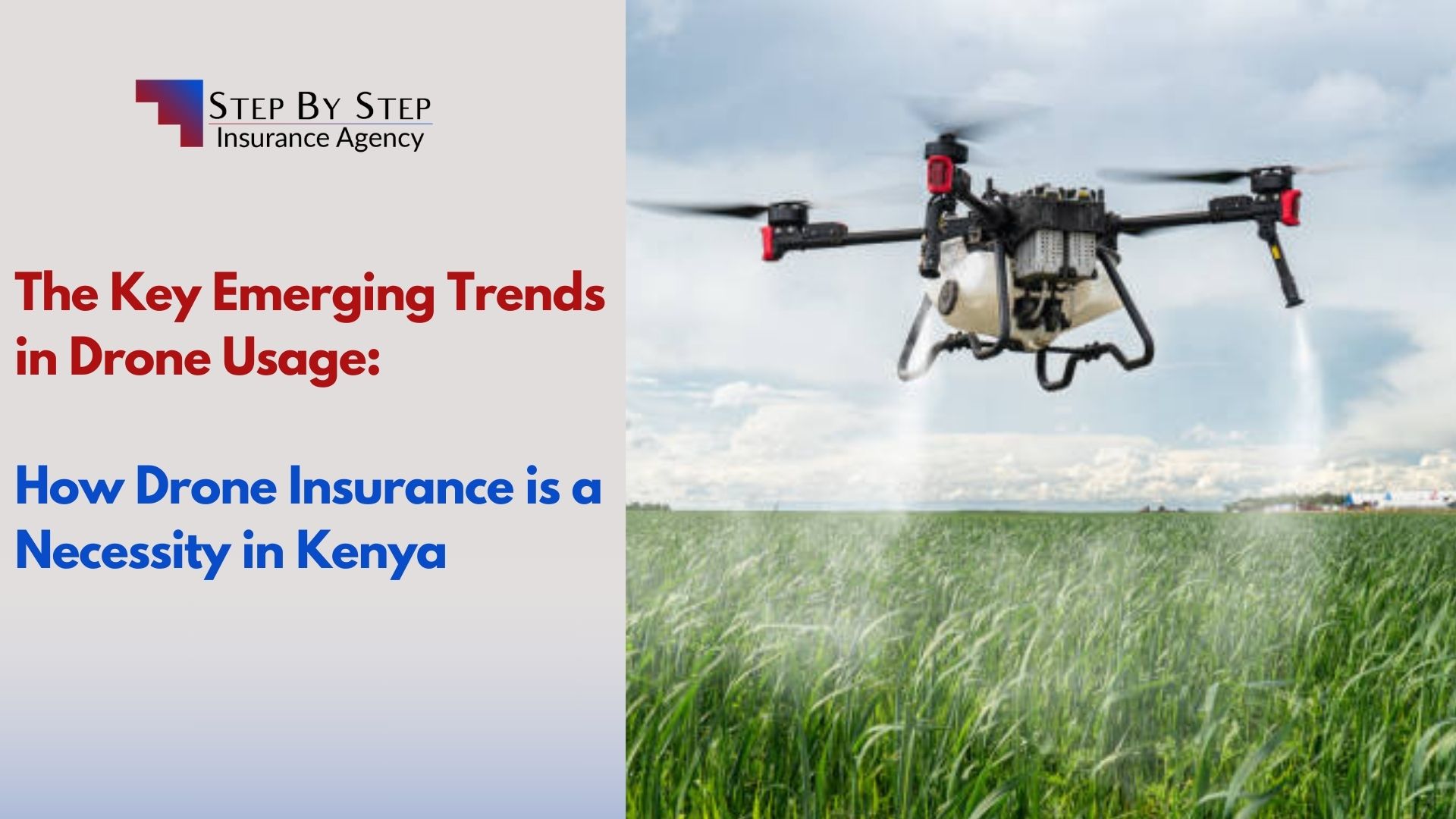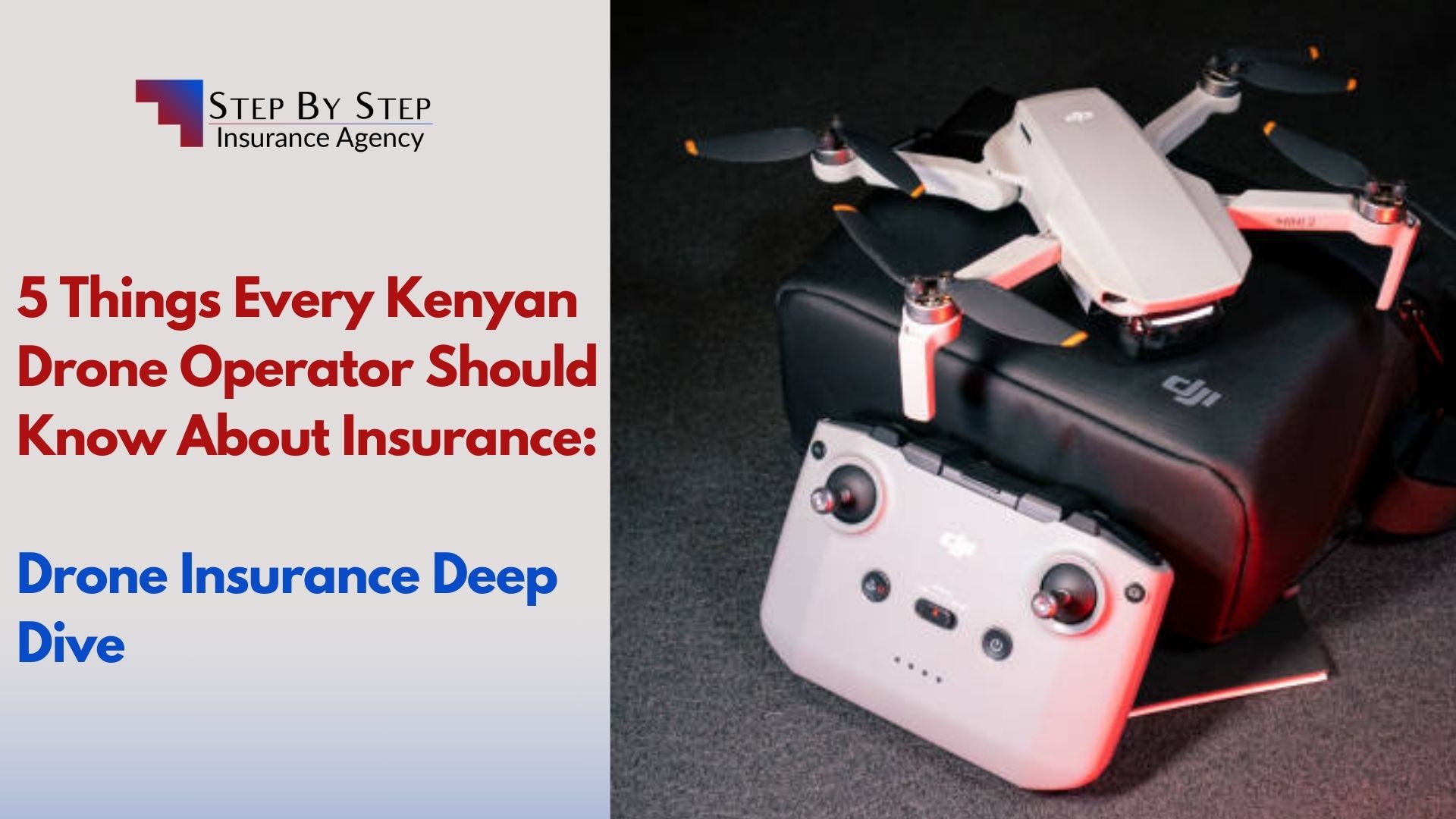Is Drone Insurance Mandatory in Kenya? Here’s What You Should Know
Tailored insurance isn’t just about compliance—it’s about peace of mind. Choosing the right drone insurance in Kenya means protecting your investment, ensuring legal compliance, and flying with confidence. Whether you’re a commercial operator or a hobbyist, a personalized policy ensures you only pay for the protection you truly need.
Key Takeaway
Drone insurance in Kenya is mandatory for commercial operators under KCAA regulations, requiring third-party liability coverage before obtaining an operating certificate. While hobby users aren’t legally required to have insurance, it’s strongly recommended for financial protection and peace of mind. The right tailored policy protects your investment, ensures compliance, and safeguards your business from costly accidents and legal liabilities.
Table of Contents
- The Rise of Drone Operations in Kenya
- Understanding KCAA Drone Regulations
- So, Is Drone Insurance Mandatory in Kenya?
- Why Drone Insurance Matters
- Types of Drone Insurance Coverage Available
- The Cost of Drone Insurance in Kenya
- Tailored Insurance: Why One Size Doesn’t Fit All
- How to Get Drone Insurance in Kenya
- Penalties for Operating Without Insurance
- Industry Insights: Drone Insurance Trends
- Expert Advice: Choosing the Right Partner
- Conclusion: Protect Your Sky Investment
Join Our Insurance Community
Stay updated with the latest drone insurance trends, KCAA regulations, and exclusive tips from insurance experts. Connect with fellow drone operators across Kenya!
Join WhatsApp GroupThe Rise of Drone Operations in Kenya
Drones are no longer futuristic gadgets — they’ve become essential tools in Kenya’s evolving economy. From film production and agriculture to land surveying and logistics, these unmanned aerial systems are changing how we work and create.
According to the Kenya Civil Aviation Authority (KCAA), drone registrations have risen sharply since the Civil Aviation (Unmanned Aircraft Systems) Regulations, 2020 came into effect. This surge highlights Kenya’s growing reliance on drone technology for business and innovation.
Yet, as drones take to the skies, risks also rise. Accidental crashes, equipment loss, and third-party damages can result in significant financial or legal setbacks. That’s why understanding drone insurance in Kenya — and whether it’s mandatory — has become crucial for every operator.
Understanding KCAA Drone Regulations
The KCAA is the national body responsible for managing all drone operations in Kenya. It ensures that drones are used safely, ethically, and in compliance with international aviation standards.
Here’s what the KCAA requires for all drone users:
- Drone registration: Every drone must be registered before operation.
- Operational licensing: Commercial drone operators must apply for an operating certificate.
- Safety compliance: Operators must follow altitude limits, no-fly zones, and data protection rules.
- Insurance for liability: For commercial use, third-party liability insurance is a mandatory requirement.
Learn more about Kenya’s updated drone laws and how they affect your operations.
So, Is Drone Insurance Mandatory in Kenya?
The answer depends on how you use your drone.
| Operator Type | Is Insurance Mandatory? | Required Coverage |
|---|---|---|
| Commercial Operators (e.g., filmmakers, surveyors, agri-tech firms) | ✅ Yes | Third-party liability (KCAA requirement) |
| Recreational / Hobby Users | ❌ No (optional) | Recommended: Hull and third-party liability |
| Government & Public Sector | ✅ Yes | Full operational and third-party coverage |
In summary:
- Commercial operators must have insurance before obtaining an operating license.
- Hobby users are not legally required to insure their drones but are encouraged to do so for protection and peace of mind.
Why Drone Insurance Matters (Even If It’s Not Mandatory)
Even when the law doesn’t require it, drone insurance in Kenya is one of the smartest investments any operator can make.
Here’s why:
- Financial Protection: A single crash could destroy expensive equipment or cause third-party damage. Insurance cushions you from heavy repair or compensation costs.
- Legal Safety: Liability coverage protects you if your drone injures someone or damages property.
- Professional Credibility: Clients and regulators trust insured operators. It’s a sign of professionalism.
- Business Continuity: After an incident, your operations can resume quickly with insurer support.
- Peace of Mind: You focus on flying; your insurer handles the risks.
Types of Drone Insurance Coverage Available in Kenya
Tailored coverage means you don’t pay for what you don’t need — but you’re fully protected where it counts. Below are the key types of drone insurance in Kenya, offered through reputable underwriters.
| Coverage Type | Description | Who It’s For |
|---|---|---|
| Third-Party Liability | Covers injuries or property damage caused by your drone. | Mandatory for commercial operators |
| Hull Insurance | Covers physical damage or loss of your drone. | Hobbyists and professionals alike |
| Payload Insurance | Protects attached devices like cameras, sensors, or LIDAR tools. | Filmmakers, surveyors, researchers |
| Personal Accident Cover | Protects the operator in case of injury or death. | All drone users |
| Data & Cyber Protection | Covers data loss, hacking, or privacy violations. | Corporate operators, media, and research entities |
A comprehensive drone policy can combine several of these coverages for complete protection.
The Cost of Drone Insurance in Kenya
Drone insurance costs vary based on several factors:
| Factor | Impact on Cost |
|---|---|
| Drone value | Higher drone value = higher premium |
| Usage type | Commercial use typically costs more due to higher risk |
| Coverage type | Comprehensive packages cost more than basic liability |
| Flight frequency | Frequent flights increase exposure to risk |
| Pilot experience | Certified or trained pilots often enjoy lower premiums |
On average, drone insurance in Kenya can range from Ksh 15,000 to over 100,000 per year, depending on your policy and the insurer. Step by Step Insurance Agency partners with leading Kenyan underwriters to deliver affordable and flexible plans for every operator.
Tailored Insurance: Why One Size Doesn’t Fit All
Every drone operation is unique — and so should your coverage be.
A filmmaker capturing wedding footage faces different risks from a surveyor mapping farmlands or a government agency inspecting infrastructure. Tailored coverage ensures that each operator gets:
- Customized protection aligned to their specific operational risks.
- Accurate valuations that match the true cost of equipment and payloads.
- Scalable coverage that grows as the business expands.
- Seamless claims support through trusted local underwriters.
At Step by Step Insurance, personalization is the cornerstone of our service. We analyze your operational needs and match you with Kenya’s leading underwriters, ensuring reliable protection without unnecessary add-ons.
Related Resources
How to Get Drone Insurance in Kenya
Here’s how to secure the right drone insurance quickly and correctly:
1. Register Your Drone with KCAA
- Visit the KCAA UAS Portal to register your drone.
- Get your registration certificate and identification number.
2. Define Your Use Case
- Is your drone for commercial, government, or recreational use?
- The purpose determines whether insurance is mandatory and what type fits best.
3. Assess Your Risks
- Consider potential hazards — equipment loss, crashes, injuries, or data breaches.
- This helps shape the scope of your policy.
4. Request a Quote
- Contact Step by Step Insurance Agency for a personalized quote.
- Our experts will assess your drone type, budget, and coverage goals.
5. Review Coverage & Exclusions
- Read through your policy carefully — understand what’s covered and what’s not.
- Common exclusions include intentional damage, illegal flights, or non-licensed operators.
6. Secure Your Policy
- Once satisfied, finalize your coverage.
- Keep your insurance certificate ready for KCAA inspection or license renewal.
Penalties for Operating Without Insurance
Flying a commercial drone without insurance in Kenya can lead to serious consequences:
- License Denial or Suspension: KCAA won’t issue or renew an operator’s certificate without proof of insurance.
- Legal Liability: You’ll be personally responsible for all third-party damages or injuries.
- Fines and Penalties: Non-compliance with aviation laws attracts significant fines.
- Business Loss: Lack of coverage may cost you contracts, clients, and trust.
Insurance not only keeps you compliant — it safeguards your reputation and operational future.
Industry Insights: Drone Insurance Trends in Kenya
- Rising Commercial Demand: With more businesses using drones for mapping, logistics, and content creation, commercial drone insurance is becoming standard practice.
- Technology Integration: Modern insurers are using telematics and flight logs to offer usage-based premiums.
- Growth in Specialized Policies: Insurers are expanding offerings to include cyber, data, and high-value payload coverage.
- Local Partnerships: Agencies like Step by Step Insurance work with top underwriters to provide flexible, localized protection.
These developments signal that Kenya’s drone insurance market is maturing rapidly — with a strong focus on safety, compliance, and customization.
Expert Advice: Choosing the Right Drone Insurance Partner
When selecting a drone insurance provider, consider these expert tips:
| Tip | Why It Matters |
|---|---|
| Work with Licensed Agents | Always buy from an authorized insurance intermediary or broker. |
| Check Underwriter Reputation | Ensure your insurer has a strong record for claim reliability. |
| Ask for Tailored Coverage | Avoid generic “one-size-fits-all” policies. |
| Review Terms Regularly | As your operations evolve, update your policy to stay protected. |
| Seek Professional Guidance | Agencies like Step by Step Insurance simplify the process — from quote to claim. |
Conclusion: Protect Your Sky Investment
While drone insurance in Kenya may not be mandatory for every operator, it’s an essential safety net for anyone who values their equipment, career, or business.
Insurance transforms uncertainty into security — ensuring that one accident doesn’t ground your dreams. Whether you’re a creative filmmaker, a tech-savvy farmer, or an engineering firm mapping Kenya’s future, having the right policy keeps you compliant, confident, and covered.
At Step by Step Insurance Agency, we believe that the best protection is personalized. We partner with Kenya’s leading underwriters to offer tailored drone insurance solutions that match your exact needs — from liability to equipment and beyond.
Talk to Our Experts Today
Discover how you can protect your drone, your work, and your peace of mind — step by step.
Step by Step Insurance Agency – Your trusted partner for comprehensive drone insurance in Kenya. We work with leading underwriters to provide tailored coverage that protects your investment and ensures KCAA compliance.
